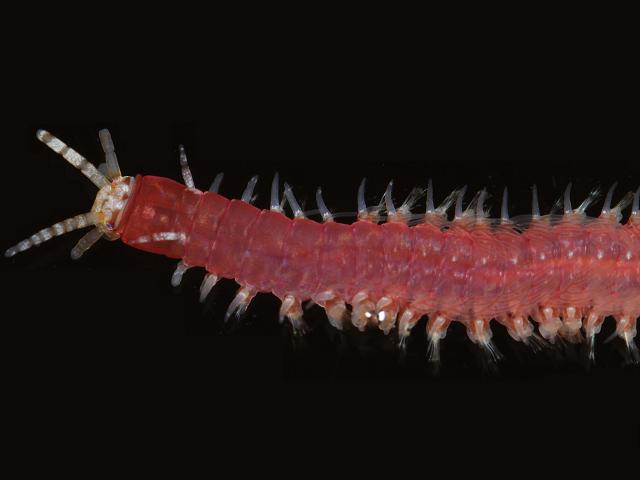
APHOTOMARINE
An educational resource dedicated mainly to the photography
and diversity of marine life that can be found in coastal waters
and intertidal areas of Great Britain and Ireland by David Fenwick.

Leodice harassii (Audouin & Milne Edwards, 1833) - A Eunicid worm (Marine worm images)
Scroll down and rollover titles to change screen image or click on title to view image.
Eunicid worm
Leodice harassii
- anterior dorsal view 1
Leodice harassii
- anterior dorsal view 1
Eunicid worm
Leodice harassii
- anterior dorsal view 2
Eunicid worm
Leodice harassii
- head 1
Eunicid worm
Leodice harassii
- gills 1
Specimen above found in a sample of algae and hydroids taken from a pontoon at Newlyn Marina, Newlyn, Cornwall. 20.10.14.
Eunicid worm
Leodice harassii
- mandibles 1
Eunicid worm
Leodice harassii
- mandibles 2
Specimen above found in a sample of algae and hydroids taken from a pontoon at Newlyn Marina, Newlyn, Cornwall. 28.05.15.
Eunicid worm
Leodice harassii
- worm close-up 1
Eunicid worm
Leodice harassii
- worm close-up 2
Eunicid worm
Leodice harassii
- worm in rock crevice 1
Eunicid worm
Leodice harassii
- worm 1
Eunicid worm
Leodice harassii
- worm 2
Eunicid worm
Leodice harassii
- worm 3
Eunicid worm
Leodice harassii
- worm 4
Eunicid worm
Leodice harassii
- worm 5
Eunicid worm
Leodice harassii
- worm 6
Species found under rocks and in rock crevices on the lowershore at Wherry Rocks, Wherrytown, Penzance, Cornwall, 28.09.11; also at Chimney Rocks, Penzance, Cornwall. 21.03.12 and 25.03.12.
Eunicid worm
Leodice harassii
- head under microscope 1
Eunicid worm
Leodice harassii
- mouthparts, mandibles and maxillae 1
Eunicid worm
Leodice harassii
- maxillae 1
Eunicid worm
Leodice harassii
- mandibles 1
Specimen above was found in a scrape sample of fouling taken from a pontoon at Newlyn Marina, Newlyn, Cornwall, 05.05.18.
Leodice harassii was previously known as Eunice harassii.

The main objective of this website is in furthering environmental awareness and education through the medium of photography. To increase awareness and access to the wildlife of the region and help
people find and identify it. Sometimes the difference between species is obvious but many species can only be determined by observing microscopic characteristics that are specific to any one species.